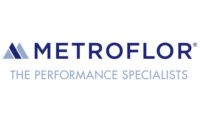USGBC Working Group Approves New Guidance for LEED Materials & Resources Credit 4

The U.S. Green Building Council (USGBC) has released the results of its Supply Chain Optimization Working Group, a group that was chartered to develop implementation procedures within option 3 of the LEED v4 Materials & Resources credit (Building Disclosure and Optimization–Material Ingredients).
The working group has recommended significant implementation actions to supplement option 3, intended to provide building product manufacturers with a step-by-step process for meeting its requirements. The working group also created a framework for a field test of the guidance with building product manufacturers.
While there are several existing ways project teams can achieve the Materials Ingredients credit, the options currently available focus on finished products. The new option 3 guidance focuses on rewarding manufacturer achievements related to programs that drive the environmental, health and safety management of hazardous ingredients within the supply chain. These systemic opportunities are uniquely available to manufacturers, are designed to spur innovation, and can have substantial co-benefits and synergies across broad segments of manufacturing.
“Over the last 11 months, the Supply Chain Optimization Working Group has demonstrated how communication and collaboration can lead to significant progress,” said Rick Fedrizzi, CEO and founding chair, USGBC. “The group’s recommendations have the potential to ignite further market transformation and drive more transparency in the product manufacturing industry. I want to thank all the members of the group for their hard work.”
The working group has outlined minimum steps for product manufacturers that enables them to offer insight and transparency into their processes:
1. Publicize guiding principles that include commitments to continual improvement, sharing of information, green chemistry and green engineering.
2. Implement an ISO-14001-type environmental management system, with added elements for human health and safety that addresses all significant environmental and health impacts of their operations.
3. Ensure that any direct suppliers of hazardous ingredients have corresponding environmental and health & safety management systems.
Additionally, there are added incentives for companies that go above and beyond the minimum in situations where, for example, they apply the processes to their entire company or full supply chain.
“The process outlined by the working group helps manufacturers distinguish their products by embedding health and safety-based programs within the fabric of their management and operations," said Scot Horst, CPO, USGBC.
For more information, visit usgbc.org/leed.
Looking for a reprint of this article?
From high-res PDFs to custom plaques, order your copy today!







